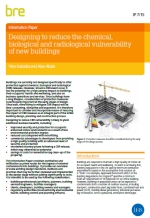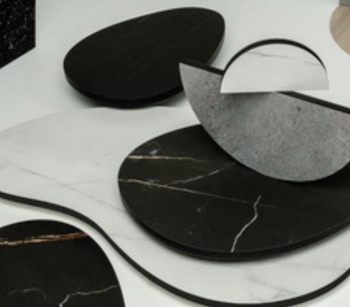Designing to reduce the chemical, biological and radiological vulnerability of new buildings (IP 7/15)
BRE (Building Research Establishment) is an independent, research-based consultancy, testing and training organisation, operating in the built environment and associated industries.
On 7 September 2015, BRE published Designing to reduce the chemical, biological and radiological vulnerability of new buildings (IP 7/15) by Vina Kukadia and Alan Abela.
If there were a chemical, biological or radiological (CBR) release, it could have a major impact on buildings, their occupants and business operations and services. However, buildings are generally not designed to offer protection against CBR events.
Once built, retrofitting to mitigate against CBR impacts is time-consuming, disruptive and expensive. It is important therefore to consider and incorporate means of reducing the impact of CBR releases as an part of the initial design, planning and construction process.
This 12-page Information Paper considers ventilation and infiltration as the main potential routes for the ingress of contaminants into buildings and provides an overview of existing design standards, methods and practices that may be implemented at the design stage without adding significantly to costs.
Designing for CBR can:
- Improve the security and protection for occupants.
- Enhance indoor environments as a result of less environmental pollution ingress.
- Offer commercial advantages to developers from providing a high-quality building with an advanced level of security and protection.
- Shorten recovery phase following a CBR release, which may otherwise be extensive.
- Offer savings in costs for remediation.
The contents of the paper include:
- Introduction.
- Ingress of contaminants into buildings.
- Building air permeability (airtightness).
- Ventilation.
- Physical security of plant and equipment.
- Fire safety and CBR incidents.
- Building zoning.
- Shelter-in-place and incident response strategies.
- Building information modelling.
- Summary.
- References and further reading.
- Appendix: Summary of strategies to reduce the impact of CBR releases on buildings.
[edit] Related articles on Designing Buildings Wiki
- BRE articles on Designing Buildings Wiki.
- BRE Buzz articles on Designing Buildings Wiki.
- Building Research Establishment.
- COSHH.
- Deleterious materials.
- Environmental health.
- Hazardous substances.
- Indoor air quality.
- Methane and other gasses from the ground.
- Pollution.
- Radon.
- Solid and liquid contaminants risk assessments.
Featured articles and news
Key points for construction at a glance with industry reactions.
Functionality, visibility and sustainability
The simpler approach to specification.
Architects, architecture, buildings, and inspiration in film
The close ties between makers and the movies, with our long list of suggested viewing.
SELECT three-point plan for action issued to MSPs
Call for Scottish regulation, green skills and recognition of electrotechnical industry as part of a manifesto for Scottish Parliamentary elections.
UCEM becomes the University of the Built Environment
Major milestone in its 106-year history, follows recent merger with London School of Architecture (LSE).
Professional practical experience for Architects in training
The long process to transform the nature of education and professional practical experience in the Architecture profession following recent reports.
A people-first approach to retrofit
Moving away from the destructive paradigm of fabric-first.
International Electrician Day, 10 June 2025
Celebrating the role of electrical engineers from André-Marie Amperè, today and for the future.
New guide for clients launched at Houses of Parliament
'There has never been a more important time for clients to step up and ...ask the right questions'
The impact of recycled slate tiles
Innovation across the decades.
EPC changes for existing buildings
Changes and their context as the new RdSAP methodology comes into use from 15 June.
Skills England publishes Sector skills needs assessments
Priority areas relating to the built environment highlighted and described in brief.
BSRIA HVAC Market Watch - May 2025 Edition
Heat Pump Market Outlook: Policy, Performance & Refrigerant Trends for 2025–2028.
Committing to EDI in construction with CIOB
Built Environment professional bodies deepen commitment to EDI with two new signatories: CIAT and CICES.
Government Grenfell progress report at a glance
Line by line recomendation overview, with links to more details.
An engaging and lively review of his professional life.
Sustainable heating for listed buildings
A problem that needs to be approached intelligently.
50th Golden anniversary ECA Edmundson apprentice award
Deadline for entries has been extended to Friday 27 June, so don't miss out!
CIAT at the London Festival of Architecture
Designing for Everyone: Breaking Barriers in Inclusive Architecture.
Mixed reactions to apprenticeship and skills reform 2025
A 'welcome shift' for some and a 'backwards step' for others.




























